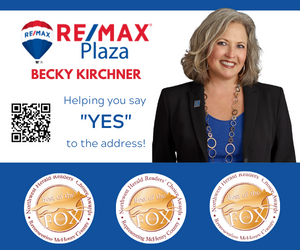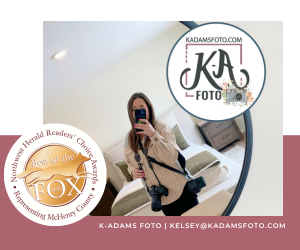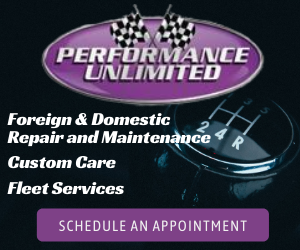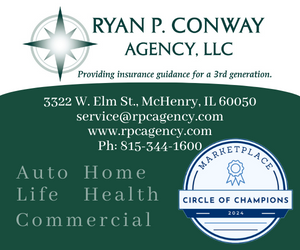Nikki O’Donnell
Nikki is the COO of Frontier Marketing
7 Incredible Logo Design Tips for Creating a Memorable Brand
Your brand logo will be the first impression potential customers have of your business. It will be the first thing they associate with your company. That means you want it to be a good first impression.
Great brand logos communicate your business’s personality and represent a promise of quality to your customers.
Follow these logo design tips for beginners, intermediates, and experts to see how you can create an impactful brand for your small business!
1. Know Your Brand
Before you start creating your logo, you need to figure out what your brand is. You’re probably thinking of course, you know what your brand is — it’s your business! Still, you need to make sure you know exactly what your company stands for before designing your logo.
To do this, the first thing you need to do is answer a few questions about your business. These questions are:
- Who are you?
- What is your company’s mission?
- What do you want your company to stand for?
- Are you experienced and reliable?
- What are the benefits and features of your products or services?
- Are you High-Cost/High-Quality or Low-Cost/High-Value?
- What do customers or prospects already think of you?
- What qualities do you want prospects to associate with your company?
The answers to these questions will guide you in creating a good logo design. So, look at your answers and make sure they are reflective of what you want your small business to be.

2. Know Your Target Audience
Who is this logo for? And how will your potential customers respond to certain logos? Determining your target audience provides insight into the direction for your logo design ideas.
Different demographics respond to different things. What one group likes, another might not.
What things interest those in your targeted demographics? If you have a wide target audience, it might be easier to decide on a logo. However, if your logo speaks to a specific audience, then you will need to be very careful with the imagery you choose.
Color Preferences
What colors does your audience prefer? Do they gravitate towards brands with red in them or blue? Does a certain shade of green evoke emotion more? It never hurts to ask your loyal customers what they prefer as you’re designing your brand.
Interests
Think about what your customers’ interests are as well. Are they more sports-oriented? Maybe they have specific hobbies, like photography. If your logo reflects an interest that the audience shares, it’ll be easier to draw them in.
Health Needs
Finally, consider how you can design a logo that speaks to your customers’ health needs. Are there certain universal images that depict what your customers need the most? Design your brand around those images to drive a powerful message home.
3. Research Your Competition
If your competition already has effective logos, then there’s a good reason for that. It means they work. So, take note of what works for them.
Universal Icons
Several small businesses will use universal icons. These are easily recognizable symbols that people can understand. If you use universal icons as part of your logo, customers will have an easier time recognizing what type of business you run. If you own an ice cream shop, for example, we’d recommend using the image of an ice cream cone. Even though your competitors may already have that universal icon, it goes a long way to build trust with your customers.
Invoking Emotion
Don’t forget to invoke an emotion of some sort. Excitement and hope are good emotions to try to bring out of your customers. Nike does this well by using sports stars to endorse their product. You feel the excitement of watching them play when they do an advertisement.
Branded vs. Unbranded
Finally, keep in mind that people often prefer using products and services that are branded. Branded products are things like Coke or Pepsi, as opposed to just generic soda. People will pay more for the branded product rather than the unbranded. Why? Because the brand is something they trust.
4. Decide Which Kind of Logo to Use
Are you going to go with a logo that features your business’s name as the logo? Or, will you use an icon or symbol of some sort to convey your message?
Logos with company names automatically register brand recognition. Your name is right there, front and center, for the world to see. Going with a name logo might be your best option, especially if you’re a small business.
While companies like Starbucks and Apple have the benefit of a simple icon to draw people in, small businesses should focus on name-brand more than anything else. Putting your name as your logo makes it impossible for people not to know, at the very least, what your business is called.
5. Coordinate Your Colors and Fonts
Now that you’ve settled on what you will achieve with your logo, it’s time to think about the creativity part. This part looks at the more fun aspects of how to make a catchy logo. The two major factors that go into any good logo design are the colors and the fonts.
Colors
Simple colors often work better than bold, flashy hues. Keep this in mind when you’re choosing your selection of colors. You want to limit yourself to no more than three colors for your logo. Otherwise, the logo can become overwhelming on the eye.
You should also study color wheels and decide on which colors are going to complement each other. People respond negatively to colors that clash. For example, blues and yellows go together well, while reds and purples don’t.
If you’re unsure about whether your colors clash, look at a color wheel. The complementary colors are the ones across from each other.
Fonts
When you’re looking at how to design a logo, make sure you keep the number of fonts to no more than two. Any more than that and the text can become difficult to read.
You should also see what types of fonts go well together. Like colors, the fonts need to be complimentary of each other. They also need to reflect your business. This goes back to those questions you answered earlier. What font makes the most sense for how you want your business to be portrayed?
6. Know Where Your Logo Will Be Displayed
Your logo is going to be displayed on all your marketing materials, which includes both web and print items. How your logo looks on the web versus in print can be very different. A logo that looks good on your website might not translate well to your promotional flyers.
Therefore, testing different logos across all your platforms is a good idea. Doing so will allow you to see if your logo has any weaknesses that you need to fix.
This is also another reason to keep it simple. It’ll be easier to translate a simple logo across different mediums.

7. Balance Timelessness and Flexibility
The goal of your logo is to create something that will hold up well as time changes. However, we can’t always predict how trends will change. So, don’t be afraid to update or modify your logo as time goes by. Many successful businesses like Starbucks, Shell, Pepsi, and Apple have had several logo revisions over the years.
Sometimes companies will post stories about how they decided on a new logo. Frontier Marketing did just that. We wrote about the entire rebranding of our website and logo in detail so customers would have the inside explanation for our changes.
Do You Want More Logo Design Tips?
Is your small business in need of a top-rate logo and branding? Do you want to see how a powerful logo can help sell your business? It can be hard for small business owners to find time to craft their own logo, so why not let somebody else handle it?






















